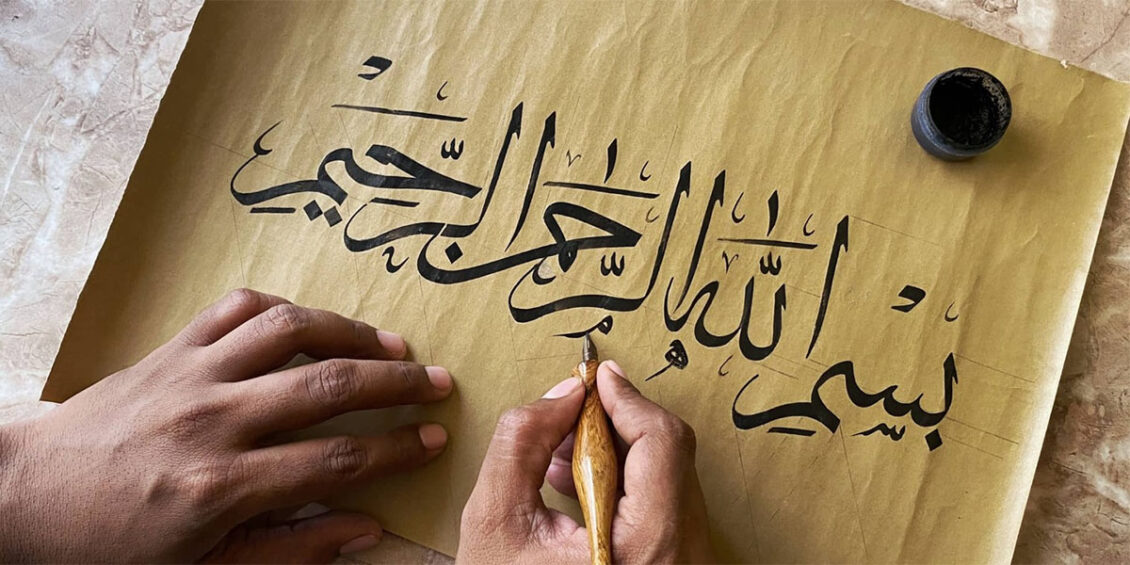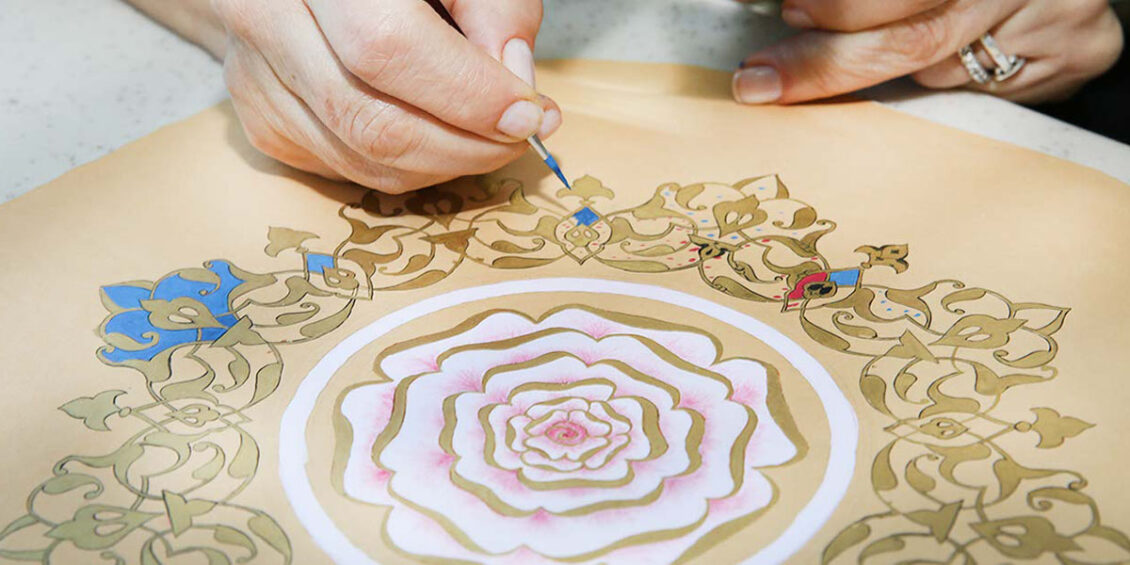The Arabian Peninsula is the lands where Islam was born and grew. Arabic script is based on Nabati script, which is a descendant of Arami. The very command of Islam is “to read”, and this necessitates to save texts to read. Thus, writing has been developed in parallel with this. Writing in the East is what painting means to the West. It has even greater importance than painting in the Western world. In this context, writing is something sacred and artistic, as well as being a part of daily life.
Category: General
The Art of Khatt
The writing style used in the first Qur’ans is Kûfî, which is known with its cornered form. Later on, six main writing types emerged, as “aklâm-ı sitte” (six pens). These are Muhakkak, Reyhânî, Sülüs, Nesih, Tevkî, Rik’a. The other developed writing types by the time are Ta’lik, Divanî, Türk Rik’ası, Siyakat.
In the 10th century, Ibn Mukle made the first reforms in the art of Khatt. Ibn Hilal improved this writing. But the greatest move was done by Yakut Mustasimî, by finding “nesta’lik” khatt. The writing style which is both functional and aesthetic developed in the era of Anatolian Seljuks, despite it was born out of Arab environment, and hit the peak among the classical arts in Ottoman times. This is mainly thanks to supports given by II Mehmed and II Bayezid.
The art of Ottoman khatt showed little change at the beginning, but one important reform was made by Sheikh Hamdullah, who brought a novelty to the writing. The other master of the era was Ahmed Karahisari. In the 17th century, the style of Hafız Osman become prominent. His special arrangement for the “hilye” (texts which describe the physical characteristics and ethics of the prophet) had become a scheme in the art of khatt. Turkish style and new writing styles improved even more in the 18th and 19th century. Not just handwritings, but khatt plaques, hilye designs, khatt murakka’s (albums) were prepared as well. The art of khatt has been carried with traditional methods.
The Art of Illumination
Tezhip is derived from the word “zeheb” in Arabic, which means gilding. Tezhip is usually made on paper using certain forms and motifs with various colors, mainly with gold. Illumination artists are called “müzehhib” or “müzehhibe”; manuscripts which are illuminated are called “müzehheb”.
Making the gold paint requires a complicated process. First, gold in the form of a thin leaf is taken and mixed with the Arabic gum and water which is made into putty. By means of a finger or a special tool, finely shredded gold dust is brought to the paint consistency. Gelatinized water is used to stick to the surface. The pattern is drawn on the area to be illuminated and firstly a gold paint is applied. Then the golden parts are polished with the help of the “mühre (burnisher)” which has a polished agate on its edge, thus the gold shine is provided. It is usually done by contours of the half or quarter symmetrical pattern, then the patterns are painted one by one. Apart from gold, colors such as navy blue, red, pink, yellow, black, orange, blue and green shades are common in illumination. Lastly, crochet is drawn, details such as scattering and sweeping are added.
Among the manuscripts, The Holy Qur’an is the most illuminated. The development of tezhip terminology also depends on the decorated pages of the Qur’an. Parts which are on the first pages of the manuscripts are given information about the book, indicating to whom it is written and usually arranged in medallions (şemse-decorative figure of the sun) are called “zahriye”; The last leaf of the book, which is decorated with the gaps at the bottom, is called “hatime”; at the beginning of the first page of the works, it is designed as a rectangular or triangular mihrab shaped is called “heading tezhip”; two mutual pages where the most intense adorned after the zahriye page are called “serlevha”; in the Qur’an, motifs in the form of flowers used at the beginning and end of the verses are called “pause”; “rose” in various forms around the edges of the page, the circumference of the gilding is shaped in various blank forms; lastly, adornment made with gold only is called “halkârî”.
In the 14th century, the early examples of manuscripts are concentrated in Konya in the medieval Anatolia, reflecting the cultural and economic richness of the Mevlevi people. In these early examples, geometric forms and patterns are used predominantly. Decoration is applied to the last pages, between pages and in the form of headings. While a hybrid style related to different interactions in the Ottoman period prevails on the early period works, thanks to II. Mehmed and II. Bayezid’s interest and support of the book, the first examples of the classical style of tezhip begin to be given. From the middle of the sixteenth century, an ornamentation design that displays naturalistic motifs such as tulips, carnations, roses, hyacinths, irises, spring branches dominates not only manuscripts but also other branches of art such as tiles, ceramics, fabrics and carpets. While the emphasis was on the use of gold in the 17th century, in the 18th century, with the westernization movement, Western influenced motifs such as girland, ribbon, chrysanthemum, column head, and large leaves, which are called Turkish Baroque and Turkish Rococo, are added to the pattern design. In addition, asymmetry begins to be seen in designs. Baba Nakkaş, Shah Kulu, Kara Memi and Ali Üsküdari are the important names of Ottoman tezhip art.
Nowadays, very rich examples of illumination are given with the traditional approach and the combination of classical and modern is remarkable.


